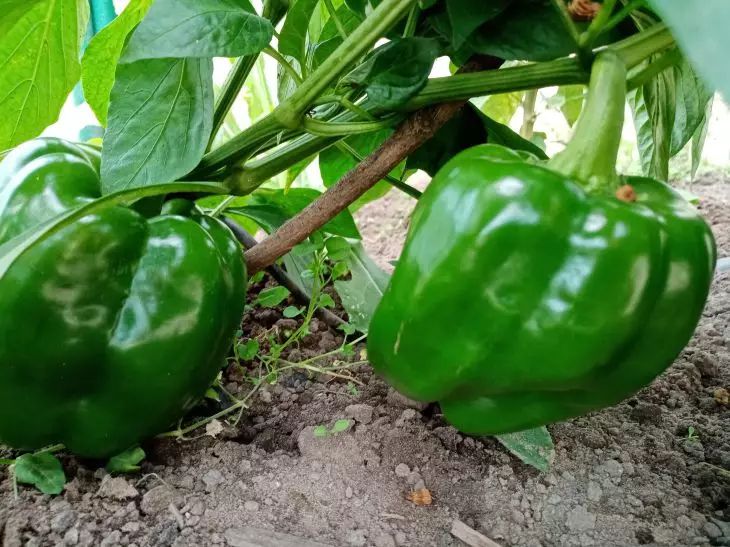- Reasons why peppers don't turn color
- Unripe fruits
- Varieties of peppers
- Potassium fertilizer deficiency
- Sharp weather fluctuations
- Damaged roots of seedlings when planting in the ground
- Measures for ripening peppers
- Insulation of plants
- Top dressing with wood ash or fertilizer containing potassium
- Harvesting
- Removing excess
- Peppers can ripen faster next to apples
- Method of maturing on foil
What to do to make peppers turn red faster and be fleshy
Sometimes, for unknown reasons, the Bulgarian sweet pepper does not turn color on the stem for a long time, and there are no signs of ripeness.
You have to resort to some tricks to get the peppers to ripen and turn color.
Reasons why peppers don't turn color
Unripe fruits
Pepper has its own ripening period, which is indicated on the seed packaging, and on average it is approximately 90-150 days from the first emergence of seedlings.
You need to calculate the expected ripeness and patiently wait for this moment.
Varieties of peppers
There are varieties that have a green color: "Viking", "Titan", "Atlantic", "Zephyr" and "Green Miracle".

When purchasing yellow, orange or red pepper seeds, you need to pay attention to the packaging, where the manufacturer must indicate the color and maturity date of the vegetables.
Potassium fertilizer deficiency
Potassium is one of the main elements for the quality development of pepper.
This means timely flowering, high-quality ovaries and timely ripening of fruits.
If there is not enough potassium, the plant's development is delayed and they look very bad.
Sharp weather fluctuations
With sharp fluctuations in weather from heat to cold and high humidity, the ripening process of vegetables is also delayed.
For peppers to ripen on time, daytime temperatures must be above 22°C and night temperatures must not be below 15°C.
Damaged roots of seedlings when planting in the ground
Pepper does not like any transplantation. Therefore, it should be transplanted by transshipment, from one place to another, removing the paper or plastic cup, without damaging the integrity of the soil lump with roots.
Measures for ripening peppers
Insulation of plants
During prolonged cold spells, you need to insulate the bed with plants by any means. Make a shelter from improvised materials, place plastic bottles filled with water around the area so that the heat can accumulate during the day. Turn on the heater at night, if it concerns a greenhouse.
Top dressing with wood ash or fertilizer containing potassium
During the fruiting period, you need to regularly feed the plants with potassium fertilizer or use ash.
For example:
- First, sprinkle the bush with ash using two tablespoons, and then water it well.
- Dissolve 1 teaspoon of potassium sulfate in 10 liters of clean water.
- Dilute 2 teaspoons of potassium salt and superphosphate in 10 liters of water.
- If the weather is cold, add 20% more potassium than in warm weather.
Harvesting
In order for the pepper to quickly acquire the color characteristic of this variety, it is necessary to frequently pick ripe fruits while they are still technically ripe. The very first pepper delays the ripening of subsequent fruits, so it must be removed from the bush earlier.
Removing excess
At the end of the season, you need to leave a certain number of the largest fruits on the bush or those that have already set, and remove everything else. These can be flowers and small fruits that will not have time to ripen. The chance of getting ripe fruits will increase several times.
Peppers can ripen faster next to apples
Peppers, picked at technical ripeness, are placed in a warm place. Fully colored peppers or apples are placed between them. This way they will quickly ripen and begin to color.
Method of maturing on foil
Spread a piece of foil in a bright place and lay out the unripe peppers on it. Due to the light reflection and exposure of the vegetables to the sun and heat, ripening becomes faster.
